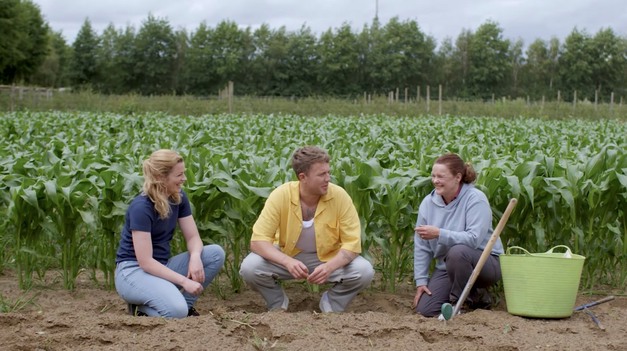In his introduction for to the Autumn Edition 2023 (no 53) of NIAB Landmark, NIAB CEO Professor Mario Caccamo discusses if regeneration agriculture is hype or hope.
Major food and drink producers, retailers, NGOs, and even high street banks are moving rapidly and in serious numbers to embrace regenerative agriculture as the solution to a more environmentally responsible approach to farming, with associated benefits for improving soil and water quality, enhancing biodiversity, reducing synthetic input use and conserving precious natural resources.
A year on since our Landmark issue (no 50) devoted to the topic of regenerative farming, it is great to see how much the term is in everyone's mouth: it is mainstream. Some of the large food companies are making similar pledges about their commitment to use foodstuffs produced by growers following regenerative farming principles.
There has been much debate of late about what regenerative agriculture really means. The lack of clear definitions has led some to suggest that it is simply greenwash. Questions also persist over whether the economics of regenerative agriculture stack up at the farm level and, at a time of mounting concern over the impact of climate change and war in Ukraine on global food prices and security of supply, what impact a large-scale switch to regen-ag practices would have on our domestic food production capacity without bringing more land into production.
Trials at Rothamsted Research since 2017, for example, involving 24 different cropping systems combining a variety of regen-ag practices have so far shown that, in the short-term, reduced tillage invariably results in lower crop yields, and that sophisticated soil management strategies alone cannot be viewed as the short-term fix for more sustainable food production.
As we mourn the recent passing of Dr MS Swaminathan, one of the fathers of the Green Revolution, it is important we reflect on the successes of agriculture. In the past five decades, the global population has doubled to reach the iconic eight billion figure in November last year.
About 10% of the world's population will go to bed hungry today; this is unacceptable. But if we go back to the time when Borlaug, Swaminathan, and other colleagues set the basis for the great leap in agriculture productivity that resulted in the Green Revolution, that figure would have been 30%. Not only have we managed to keep up with massive population growth, but we also reduced hunger and extended life expectancy at a remarkable pace.

As we are facing the challenges of climate change and the requirements to grow crops that are healthier, environmentally friendlier, and profitable, the question we should ask is: can we sustainably intensify the way we produce food? The technologies and strategies behind soil restoration and regenerative farming stand at the intersection of these challenges.
One of the strengths of regenerative farming is its lack of prescription and flexibility, provided its guiding principles are observed. These guiding principles are founded on well-established farming practices, many of which have been studied by NIAB as part of our applied agronomy research programs for many years, for example, in terms of longer, more diverse rotations, use of cover crops, minimum and no-till cultivation systems, and improvement of soil health.
Many progressive NIAB members I have spoken to about their experiences with introducing regenerative farming practices on a commercial basis are adamant that they need that flexibility and all the tools in the toolbox, such as glyphosate to control weeds or novel genetics to increase productivity while reducing dependence on chemical pesticides and fertilizers.
But while the success of regenerative farming may lie in its flexibility and the diverse range of ways in which its guiding principles can be delivered, there remains a lack of commercial-scale data to inform best practice – in other words, a lack of independent science, which will incentivize farmers to adopt soil restoration production practices, allow the industry to demonstrate its sustainability credentials to value chain partners, and to communicate with consumers the benefits that come from a more science-based approach to agricultural production.
As former Teagasc director Professor Gerry Boyle observed recently: "..fluffy claims are not enough, and robust scientific data is needed to assess the power of regenerative agriculture."
In short, there is a need to provide the science that can scale up and underpin the credibility of regenerative farming systems based on a recognition that practices focused on increasing soil organic matter, avoiding erosion, and reducing disturbance to the soil are entirely compatible with sustainable intensification and precision agriculture.
For more information: NIAB
NIAB
Huntingdon Road, Cambridge
CB3 0LE, UK
Tel.: +44(0)1223 342200
Fax: +44(0)1223 277602
info@niab.com
www.niab.com
